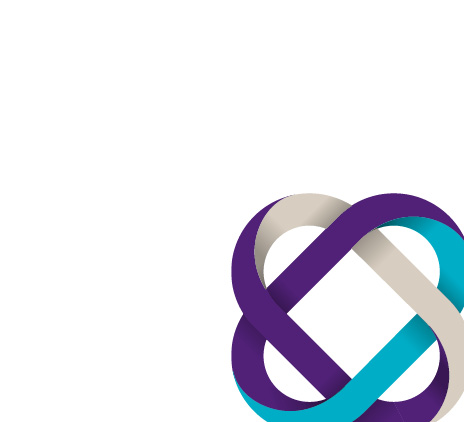-
Transactional advisory services
Find out more about the transactional advisory services of Grant Thornton Financial Advisory Services
-
Valuations
Find out more about the valuations services of Grant Thornton Financial Advisory Services
-
Mergers and acquisitions
Find out more about the merger and acquisition services of Grant Thornton Financial Advisory Services
-
Forensic and investigation services
Find out more about the forensic and investigation services of Grant Thornton Financial Advisory Services
-
Recovery & reorganisation
Find out more about the Recovery & reorganisation services of Grant Thornton Financial Advisory Services
-
Business risk services
Find out more about the business risk services of Grant Thornton Financial Advisory Services
-
Business consulting
Find out more about the business consulting services of Grant Thornton Financial Advisory Services
-
Capital market
Capital market
-
Corporate and business tax
Find out more about our corporate and business tax services.
-
Direct international tax
Find out more about our direct international tax services.
-
Global mobility services
Find out more about our global mobility services.
-
Indirect international tax
Find out more about our indirect international tax services.
-
Transfer pricing
Find out more about our transfer pricing services.
-
Litigation
Our lawyers and accountants can manage all defense measures provided not only by the Italian law, but also by EU regulations and conventions
-
Family business
Find out more about our Family business services.
-
Legal
The client can be assisted in every need and with the same care both on important operations or disputes and on simple matters

-
Back office outsourcing
Find out more about our Back office outsourcing services
-
Business process outsourcing
Find out more about our business process outsourcing services.
-
Compilation of financial statements
Find out more about our compilation of financial statements services.
-
Tax compliance
Find out more about our tax compliance services.
-
Electronic invoicing
Find out more about our electronic invoicing services
-
Electronic storage
Electronic storage is an archiving procedure that guarantees the legal validity of a digitally stored electronic document
-
Revaluation of corporate assets
Find out your civil and fiscal revaluation of tangible, intangible and financial assets
-
Human resources consulting
Find out more about our human resources consulting services.
-
Payroll
Find out more about our payroll services.
-
HR News
HR News the monthly information newsletter by Grant Thornton HR
-
Cybersecurity
GT Digital helps clients structure information security management internal functions, also through partially or totally outsourced functions
-
Agile and Programme Management
GT Digital provides support in the adoption and implementation of different portfolio management
-
Robotic Process Automation
Our “BOT Farm” can rely on digital workers able to help clients in routine activities, allowing employees to deal with more added-value activities
-
Data strategy and management
GT Digital can support clients in seizing the opportunities offered by Big Data, from the definition of strategies to the implementation of systems
-
Enterprise Resource Planning
We support clients in selecting the most appropriate ERP System according to their specific needs, helping them also understand licensing models
-
IT strategy
GT Digital supports clients in making strategic choices, identifying innovation opportunities, comparing themselves with competitors
-
IT service management
We can support with software selection and with the implementation of dedicated tools for the management of ICT processes
-
DORA and NIS 2
The entry into force of the DORA Regulation and NIS2 represents a major step towards the creation of a harmonised regulatory framework
Imagine you are a senior executive of a successful charity which supports homeless people with accommodation and meals. Your charity’s shelter support hundreds of people in your own town and in toens across the world. The shelters are busier than ever, however you measure impact by how long it takes an individual to get back on their feet and into a stable job – it’s now less than four months compared to more than six months at this time last year.
But your donations and funding are at an all-time low. Your leadership team have concerns that achieving your mission to help the homeless in future may be impossible. You also have concerns over how the charity can be run more efficiently and effectively if resources are stretched.
Your mission, should you choose to accept it, is to put impact measurement at the heart of your work.
A unique impact journey
Charity leaders are increasingly identifying with the situation explained above despite each charity being on its own unique impact journey. Global charitable giving continues to decline. There is economic uncertainty in many regions of the world. The general public in many countries are more sceptical than ever when it comes to trust and confidence in charitable effectiveness and efficiency. And media channels are so crowded with conversations that it’s a fight to tell your story and be heard.
This raises some timely questions for charities. First, of those working for social change, how is the landscape being altered as a result of new entrants in the market? Second, what is the best way to maximise opportunities created by measuring impact well? Third, how do you determine the best impact measurement framework to help you to stand out from the crowd, articulate your successes, increase donations and secure funding to achieve their missions?
The answers to these questions can be used to communicate with the multiple stakeholders a charity needs to consider. Their boards or senior leadership, employees and volunteers, donors, funders and the general public all rightly hold charities to account for how money is spent and what progress is made.
People want to ‘do good’
Charities are often the default source of support for worthwhile causes, but there is no guarantee that this status will last forever. Charities do not own charitable action.
Today there are many people and organisations looking to achieve an improvement in society and alleviate its injustices, which of course is good news for beneficiaries.
Private businesses, social enterprises, online funding platforms, and individuals making direct donations to those in immediate need, all overlap into the area charities tend to operate in.
The way success is measured and reported by these different entities varies greatly, but with a common theme of sharing positive stories about impact in the real world.
Crucially, there is the temptation to report success over short timescales, even if the greatest impact might occur over years or a decade. In a world of social media and 24-hour headlines, it’s easy to be led astray.
Having effective evaluation capabilities is about understanding your impact over months, years and even generations.
Impact 2030
From organisations with a stated purpose through to emerging specialist Benefit Corporations who strive for both profits and for the betterment of the world around them, it is clear that an increasing number of corporations are looking to have a positive social and environmental impact.
One prominent example is the private sector-led IMPACT2030, backed by the United Nations. The project seeks to deliver on the UN’s Sustainable Development Goals from ending world poverty to dealing with climate change, by pooling the resources, skills and experience of the corporate world.
The arrival of Millennials
Using employees or staff to help advance these global goals is an approach not just being driven by large corporations. Research into employee engagement has shown that as many as three-quarters of Millennials would take a pay cut to work for a socially responsible company.
And what this generation may currently lack in disposable income is offset by their desire to work and volunteer for charitable causes. Interestingly, as millennials are expected to make up 35% of the world’s working population by 2020, they could overtake Baby Boomers as the most generous generation.
Charitable causes, and those they help, are benefiting from additional support in the form of money, goods or staff provided by businesses and a great number of large corporations are taking part. Through the company they work for or through fundraising platforms like Go Fund Me, people can now donate directly to their chosen cause.
We know that Millennials value transparency and information very highly. Charities telling their story, reinforced by factual and clear information about the impact they are having, could be one way to engage the Millennial generation.
Turn scrutiny into opportunity
In a world with greater overlap between charities and other organisations having an impact on the same group of beneficiaries, there is a lot to learn from each other.
By turning increased scrutiny into opportunity, charities can better fulfil their mission.
Charities have an opportunity to meet the transparency and accountability needs of their donors, funders and leadership teams as a point of difference. By building impact measurement into projects from the outset and sharing progress, charities can also work toward achieving their goals with a solid foundation of metrics. Clear measures lead to a better business case and ultimately stronger funding and donor relationships. Charities that don’t do this risk losing the backing – financial or otherwise – of vital stakeholders.
Adapt an impact measurement framework to fit your needs
All charities can use impact measurement as a way to help fulfil their potential. It is important to remember that measuring impact is scalable and can be built up and reviewed over a period of time – it does not have to be an onerous process.
Charities that are unsure where to start should make the most of their existing resources and perhaps start small. They can then consider what additional support they need to roll-out their impact measurement initiatives more widely, whether that’s reviewing existing parameters or recruiting employees with specialist skills.
This process is a good basis which charities can tailor to meet their needs to suit their unique position. With more variety of individuals and organizations participating in the charitable giving area, and important demographic and cultural shifts taking place, charities can better achieve their mission by establishing an impact measurement framework. Whatever stage your charity is at, impact should be at the heart of your work.
